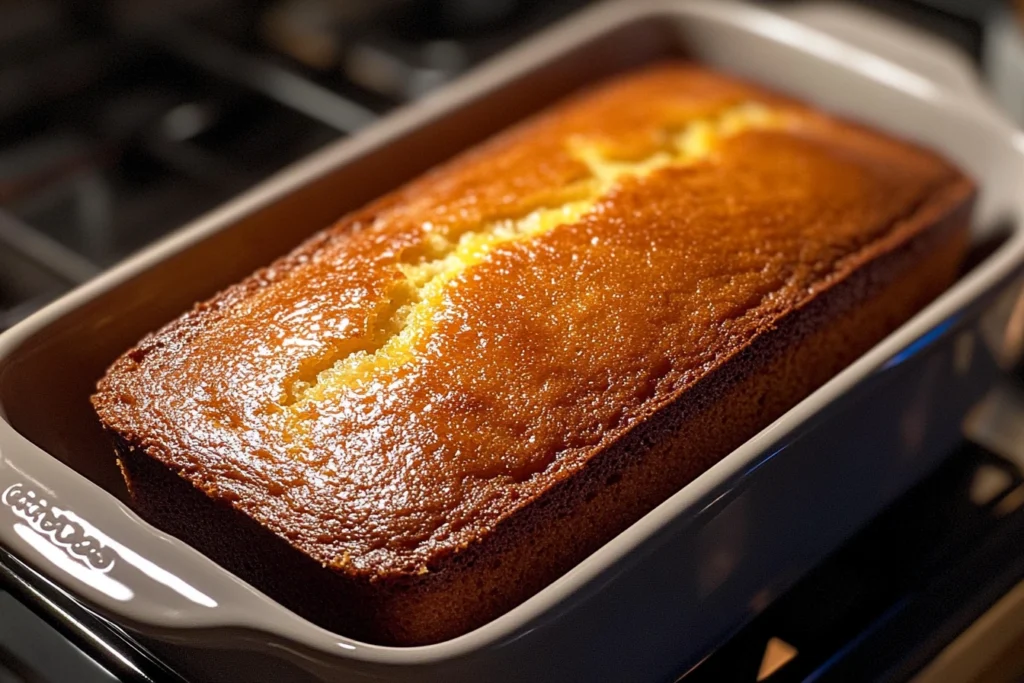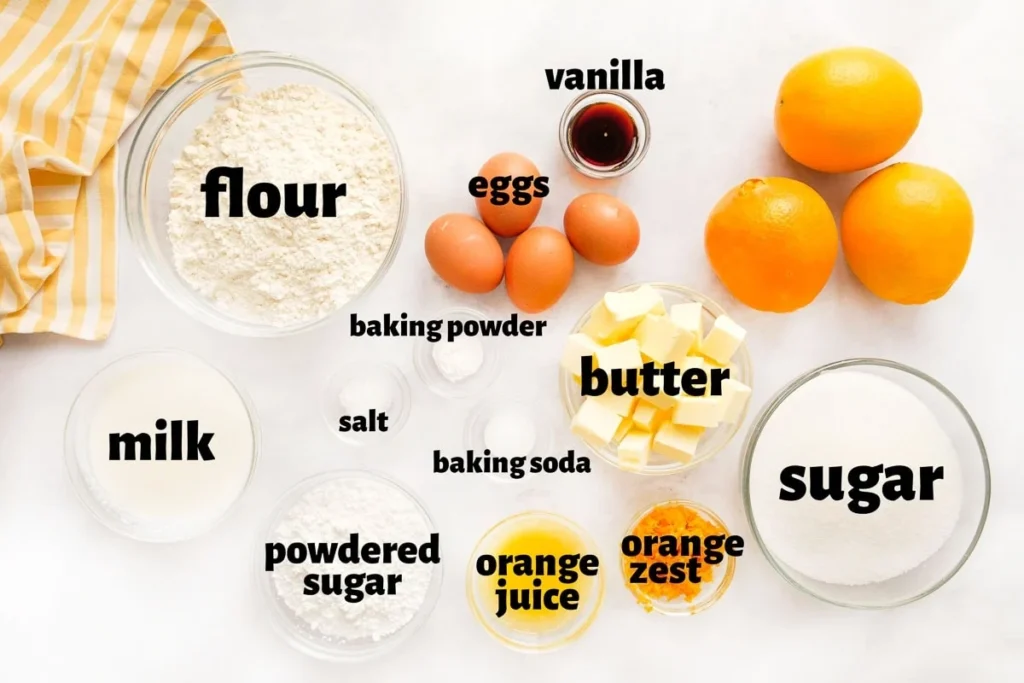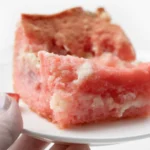Introduction: The Magic of Orange in a Classic Pound Cake
There’s something undeniably comforting about the rich, buttery texture of a classic pound cake. But when you add a burst of citrus from fresh oranges, this humble dessert transforms into a showstopper. This article is your ultimate guide to mastering the orange pound cake recipe, with everything you need to know to make a moist, zesty, and unforgettable treat. Whether you’re baking for a family gathering, a spring brunch, or simply treating yourself, this recipe delivers a dessert that is vibrant, aromatic, and soul-satisfying.
In this comprehensive guide, we’ll cover the origins of the pound cake, why orange is the perfect flavor infusion, and of course, how to make the best orange pound cake from scratch. We’ll also go into detailed tips, techniques, variations, and storage ideas to help you succeed every single time.
5-Star Mounds Cake Recipe: Chocolate Coconut Perfection
The History of Pound Cake and Why It Works So Well with Orange

Pound cake has a rich legacy that goes back to the early 1700s in Europe, particularly in England and France, where home bakers sought to create a dense yet satisfying dessert with simple, accessible ingredients. The original recipe was straightforward—a pound each of flour, butter, sugar, and eggs—which made it easy to remember, especially in a time when written recipes were less common. The name “pound cake” was literally a description of its ingredients.
This basic formula produced a heavy, rich cake meant to serve large families or gatherings. Over time, bakers began experimenting by reducing the quantities, introducing chemical leaveners like baking powder, and incorporating flavorings such as vanilla, lemon, or almond extract to enhance its taste and texture. The result was a lighter, fluffier cake that still retained its signature richness and buttery flavor.
So, why does orange pair so beautifully with pound cake? The answer lies in the natural harmony between rich and bright flavors. Orange—especially fresh zest and juice—adds a lively, citrusy note that cuts through the density of the cake. The essential oils in orange zest are aromatic and slightly bitter, while the juice adds natural acidity and moisture. Together, they lift the entire flavor profile, making each bite feel lighter and more refreshing.
This combination of buttery indulgence and zesty brightness creates a cake that feels luxurious yet balanced. It’s no wonder orange pound cake has become a favorite variation—it captures the essence of the traditional pound cake while offering a modern, flavorful twist that appeals to today’s palates.
Ingredients You’ll Need for the Perfect Orange Pound Cake

Here’s what you’ll need for a classic orange pound cake recipe:
- 1 cup (2 sticks) unsalted butter, room temperature
- 2 cups granulated sugar
- 4 large eggs
- 2 1/2 cups all-purpose flour
- 1/2 teaspoon baking powder
- 1/2 teaspoon baking soda
- 1/2 teaspoon salt
- 3/4 cup whole milk
- 1/4 cup fresh orange juice
- 1 tablespoon orange zest
- 1 teaspoon pure vanilla extract
For the glaze:
- 1 cup powdered sugar
- 2–3 tablespoons fresh orange juice
- Optional: Extra zest for garnish
How to Make Orange Pound Cake Step by Step

Making orange pound cake from scratch is easier than you might think—and it’s one of those bakes that smells just as amazing as it tastes. Here’s a step-by-step breakdown so you can create a moist, citrus-infused cake with perfect texture and flavor every time.
Step 1: Preheat and Prep
Start by preheating your oven to 325°F (163°C). This lower temperature helps the cake bake evenly without drying out. Grease and flour a 9×5-inch loaf pan or a Bundt pan to prevent sticking and ensure easy release.
Step 2: Creaming the Butter and Sugar
In a large mixing bowl, beat the butter and sugar together for about 5 minutes. You’re looking for a light, fluffy consistency—this step is crucial for achieving that classic, tender pound cake crumb.
Step 3: Add Eggs One at a Time
Crack in the eggs one at a time, mixing well after each addition. This ensures the batter stays smooth and emulsified.
Step 4: Mix Dry Ingredients
In a separate bowl, sift together the flour, baking powder, baking soda, and salt. Sifting helps prevent lumps and evenly distributes the leavening agents.
Step 5: Combine Wet Ingredients
In another bowl, mix the milk, orange juice, orange zest, and vanilla extract. This mixture brings moisture and that bright citrus flavor.
Step 6: Alternate Mixing
Gradually add the dry and wet ingredients to your butter mixture, alternating between the two. Always begin and end with the dry mixture for best texture.
Step 7: Bake to Perfection
Pour the batter into your pan, smooth the top, and bake for 60–75 minutes. The cake is ready when a toothpick comes out clean.
Step 8: Cool and Glaze
Cool the cake in the pan for 10–15 minutes, then transfer to a wire rack. Once cooled, finish with a zesty orange glaze for the perfect citrusy finish.
Pro Tips for a Moist Orange Pound Cake
- Use room temperature ingredients to ensure a uniform texture.
- Don’t overmix the batter; it can lead to a dense cake.
- Use freshly squeezed orange juice and zest for maximum flavor.
- Try using cake flour for a softer crumb.
- Wrap the cake in plastic wrap overnight for even more moistness the next day.
The Best Orange Glaze for Pound Cake

A great glaze elevates the orange pound cake from good to gourmet. Here’s a quick recipe:
Ingredients:
- 1 cup powdered sugar
- 2–3 tablespoons fresh orange juice
Directions: Whisk together until smooth. Adjust the thickness by adding more juice or sugar. Drizzle over the cooled cake and let it set for 15 minutes.
Serving Suggestions for Orange Pound Cake
- Serve with whipped cream and berries for a refreshing summer dessert.
- Pair with Earl Grey tea or a vanilla latte.
- Slice and toast lightly for breakfast with a smear of butter.
- Top with orange marmalade for extra citrus punch.
Storage and Freezing Tips Orange pound cake recipe
This cake keeps well at room temperature for up to 3 days when stored in an airtight container.
To Freeze:
- Wrap the cooled, unglazed cake tightly in plastic wrap and then foil.
- Freeze for up to 2 months.
- Thaw overnight at room temperature and glaze before serving.
Variations on the Classic Orange Pound Cake Recipe
- Orange Almond Pound Cake: Add 1/2 teaspoon almond extract.
- Chocolate Orange Pound Cake: Fold in 1/2 cup mini chocolate chips.
- Orange Cream Cheese Pound Cake: Substitute 4 oz. of butter with cream cheese.
- Gluten-Free Version: Use a 1:1 gluten-free flour blend.
Troubleshooting Common Pound Cake Problems
- Cake is too dense? You may have overmixed the batter.
- Sinking in the middle? Check that your baking soda and powder are fresh.
- Dry texture? You may have overbaked it. Always check at the 60-minute mark.
- Not enough orange flavor? Try adding orange extract for an extra boost.
Reader FAQs About Orange Pound Cake
1. Can I use bottled orange juice instead of fresh?
Yes, you can—but freshly squeezed orange juice is always best for both flavor and aroma. It gives the cake a bright, natural citrus note that bottled juice can’t quite match. However, if you’re in a pinch, bottled orange juice will still work. Just make sure it’s 100% juice with no added sugar or preservatives.
2. Can I make this recipe in mini loaf pans?
Absolutely! This recipe is quite versatile. If you’re using mini loaf pans, reduce the baking time to around 35 to 40 minutes. Start checking for doneness around the 30-minute mark with a toothpick. Mini loaves are great for gifting or portion control.
3. Can I substitute sour cream for milk?
Yes, and it’s actually a great option! Sour cream adds a tangy flavor and helps keep the cake extra moist. You can substitute it in a 1:1 ratio for milk. If you want to go a step further, Greek yogurt also works beautifully.
4. Is this orange pound cake too sweet?
The sweetness is well-balanced, but if you’re sensitive to sugar, you can slightly reduce the sugar in the batter. Just keep in mind that the orange glaze adds an extra layer of sweetness, so adjusting the base recipe might help tone that down if desired.
These FAQs are based on the most common questions from home bakers who love experimenting with citrus desserts. Whether you’re new to baking or a seasoned pro, these tips will help you customize your orange pound cake to your taste.
11. Nutritional Information and Health Benefits of Oranges in Baking
Oranges aren’t just delicious—they’re also packed with nutrients. One medium orange offers over 100% of your daily recommended vitamin C intake. The zest also provides beneficial citrus oils with antioxidant and anti-inflammatory properties. When you incorporate real orange juice and zest into a cake, you’re adding both brightness and subtle wellness benefits.
A single slice (with glaze) of this orange pound cake recipe provides approximately:
- 310 calories
- 14g fat
- 40g carbohydrates
- 4g protein
To make the cake lighter, consider swapping out part of the butter with Greek yogurt or using low-fat milk.
How to Select the Best Oranges for Baking

Not all oranges are created equal for baking:
- Navel Oranges: Sweet, seedless, and great for zesting.
- Valencia Oranges: Juicier with a bolder citrus flavor, perfect for juice.
- Cara Cara Oranges: Slightly pink, very sweet, and aromatic.
Choose oranges that are firm, heavy for their size, and have vibrant peels. Organic is best if you’re using the zest to avoid wax or pesticides.
The Science of Pound Cake Perfection
Why is the creaming process so crucial? When butter and sugar are beaten together, air is incorporated into the batter, which expands during baking. This gives the cake a light yet rich structure.
Orange juice, being acidic, reacts with baking soda to help leaven the cake. The zest adds essential oils without adding liquid, giving flavor without affecting texture.
Best Pairings: What to Serve with Orange Pound Cake
- Beverages: Coffee, vanilla chai, citrusy herbal teas, or dessert wine like Moscato.
- Toppings: Mascarpone whipped cream, citrus curd, or vanilla bean ice cream.
- Savory Options: Try thin slices with a charcuterie board—it pairs surprisingly well with soft cheeses like brie.
Presentation Tips to Impress Guests Orange pound cake recipe

- Use a Bundt pan for an elegant shape.
- Garnish with orange twists or candied orange peel.
- Dust with powdered sugar for a snowy finish.
- Plate with edible flowers or fresh berries for a spring-themed look.
A Personal Note: Why I Love Orange Pound Cake
This cake has always been a family favorite. The smell of oranges fills the kitchen while it bakes, making the whole house feel cozy. It’s the cake I bring to spring potlucks, the dessert I pair with late-morning coffee, and the one I gift most often. It’s bright, simple, and universally loved.
What Others Are Saying: Reader Reviews and Tips
“I tried this orange pound cake recipe last weekend and it was a hit! Moist, flavorful, and so easy.” — Jamie S.
“I added a dash of orange extract for more punch and it worked perfectly!” — Linda M.
“Loved this recipe! Used blood oranges instead and it looked beautiful!” — Raquel D.
Conclusion: Your Go-To Orange Pound Cake Recipe Awaits
Whether you’re baking for a special occasion, a weekend treat, or simply because you love the scent of citrus filling your kitchen, this orange pound cake recipe delivers every time. It’s easy enough for beginners and refined enough to impress even the pickiest dessert lovers.
What makes this cake truly unforgettable is its perfect balance of rich buttery texture and zesty orange flavor. The moist crumb, the gentle rise, and that sweet, tangy glaze all come together in one irresistible bite. From the moment you start creaming the butter to the final drizzle of glaze, this cake is a joy to make—and even more of a joy to share.
Thanks to our step-by-step guide, you now have all the tools you need to bake this citrusy masterpiece like a pro. Plus, with tips on using fresh juice, swapping in sour cream, and adjusting sweetness to your preference, this recipe is flexible enough to suit your unique tastes.
So what are you waiting for? Grab those fresh oranges, preheat your oven, and let the aroma of baking cake and citrus zest fill your home. One slice is never enough—this is the kind of cake that has people coming back for seconds (and thirds!).
This is more than just a dessert—it’s a timeless recipe you’ll return to again and again. Add it to your baking rotation, bring it to potlucks, or make it your signature weekend bake. However you enjoy it, know that your perfect orange pound cake starts right here.





